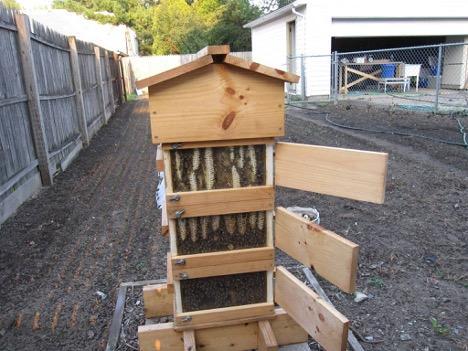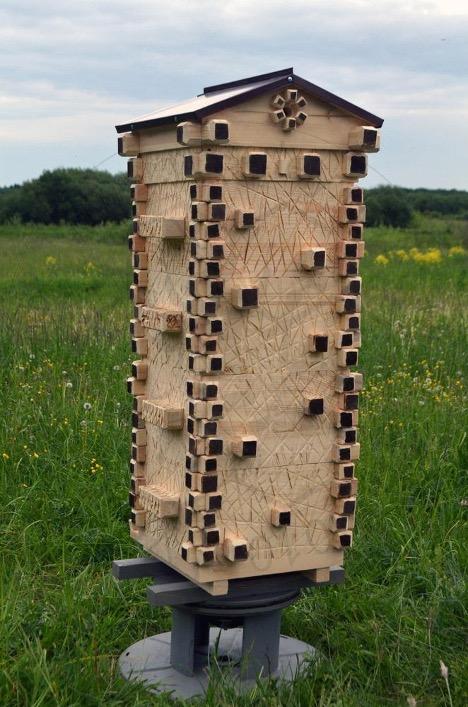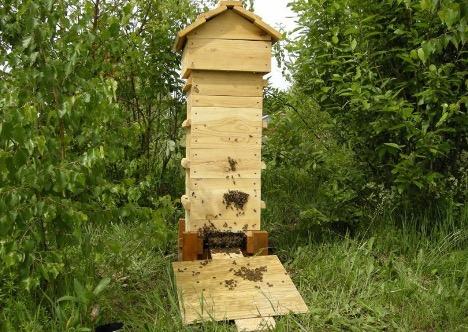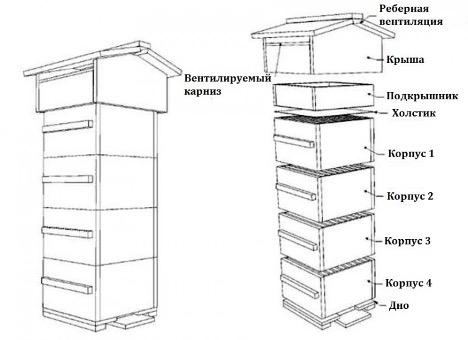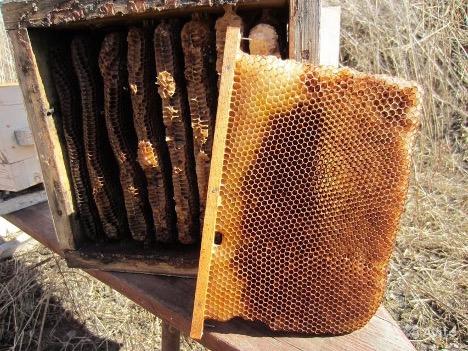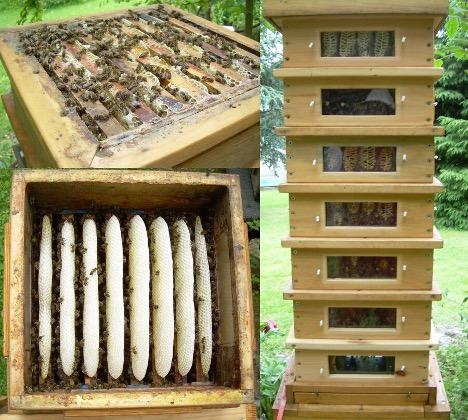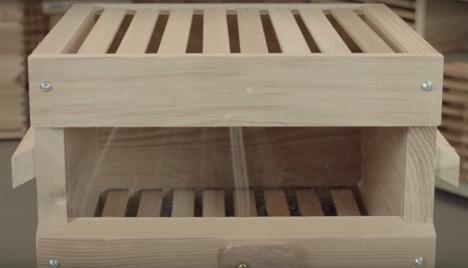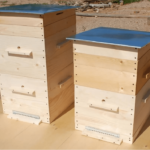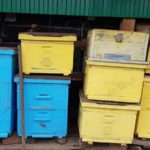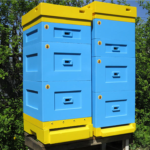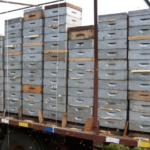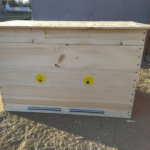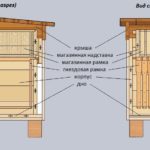Keeping an apiary means that insects need to create conditions in which they feel comfortable and as close to their usual environment as possible. Therefore, beekeepers are constantly developing new varieties of bee houses and care techniques. The Emil Varre hive is one of the options, which has certain advantages and disadvantages, which are best studied before installation.
general description
It is believed that a bee house of this type is closer than others to the natural principles of the life of bees - there are no usual frames or foundations inside, and there is practically no provision for human participation. Advantages of using such a hive in beekeeping:
- the internal structure is similar to how bees build hives in natural conditions;
- caring for the houses is easier than for other types of bee houses;
- Honey collection occurs according to a simplified work scheme;
- does not require significant expenses from the beekeeper.
Warre hives differ in some areas that beekeepers consider to be disadvantages (but not all). For example, the taphole is located at the bottom of the body, and not in the middle. Difficulties may arise in ensuring proper air exchange, which negatively affects the development of the family. The nuances are presented in the video.
A little history
The hive design was developed by the Frenchman Emile Varre in the first half of the 19th century. Abbot tested different designs - more than 50 different options. Based on the results of the research, the beekeeper developed and published a manual, “Beekeeping for Everyone,” which was republished eleven times during the beekeeper’s lifetime. Interesting Facts:
- the abbot devoted more than 50 years to beekeeping;
- 350 bee houses (on average) worked simultaneously in his apiaries;
- each bee family was monitored - calculations, records, conclusions;
- the result of many years of experience was the refusal to use frames inside the house (unlike the usual Armenian and French versions of hives).
Attention! The basis of Emil Varre's philosophy was natural beekeeping.The beekeeper was of the opinion that bees existed long before “domestication” by humans, and the task of the beekeeper is to provide the bees with natural, familiar conditions.
Drawings and dimensions
The Varre hive is called the national hive. The main advantage is low weight and simplicity of design. Bee houses filled with honey weigh no more than 15 kg, which means that you can work with such hives at different ages and physical conditions.
In order to make bee houses of this type yourself, you need to carry out some preparatory activities. The dimensions include the following parameters:
- the lower part of the body - the bottom - the usual dimensions are 33.8 cm, 33.8 cm and 1.5 cm;
- insect landing board – 16 cm, 1 cm, 1.5 cm;
- Taphole width 12 cm.
The housings are installed on top of each other, the number of sections usually does not exceed 4 pieces.
The drawings are publicly available and usually indicate the internal parameters of the design. For example:
- body – 30 cm, 30 cm and 21 cm;
- walls are chosen with a thickness of 2-3.5 cm (excluding folds). Attention! Rebates are recesses in the walls of bee houses, onto which frames are then placed. When assembling the hive, take into account the distance from the edge of the upper part of the bar and the lid (at least 0.8-1 cm);
- some prefer to install windows for observing insects - the size and location are chosen at the discretion of the beekeeper.
The author of the design preferred to choose hive elements with a thickness of 2.4 cm. Beekeepers change some parameters, depending on the experience gained.
Rational use
The main difference between keeping bees using the Emil Varre technique is that it is necessary to minimize human participation in the process of producing honey and products. Peculiarities:
- the right conditions have been created for insects, as close to natural as possible;
- for beekeepers, special handles are added on the sides of the bodies for transportation;
- in the spring, when fruit trees begin to bloom, fewer problems arise with the families.
But after the linden tree fades, the overall honey yield decreases. Some beekeepers prefer to move the apiary.
Required tools and materials
Bee hives of most types of designs can be assembled independently. To assemble Varre houses you need to prepare the following:
- power tools – circular saw, electric plane (or hand-held equivalents);
- hammer, nails, sandpaper, glue, level, measuring tape and other similar tools;
- boards, foam or polystyrene for cutting out the body and parts.
Wood is a common material for hives. The latter are used less frequently (low level of ventilation, excessive lightness of the device, rodents and birds easily penetrate inside).
How to do it yourself?
The Varre bee hive is assembled in several stages. Necessary actions:
- prepare a workplace, materials and tools;
- cut out the parts, sand the sharp edges;
- assemble the cases one by one (a small box according to the specified dimensions, inside there are 8 frames, the distance between which should be 1.2 cm);
- attach handles (wooden, steel, or other suitable material) to the sides;
- secure the bottom.
It is necessary to monitor the joints, avoid gaps, cracks, and chips.The level will help level the structure during assembly. For a beekeeper who has already assembled beehives or other similar devices, assembly will take a little time. For a beginner - a little more, but preliminary preparation will be important here. The last stage is insulation and fixation with fabric. Details in the video.
Emil Varre's hives are small and easy to assemble. Human participation is kept to a minimum, but it will take a couple of seasons to study in detail and clearly the techniques of breeding and honey collection (some nuances of insect behavior depend on the breed of bees).

